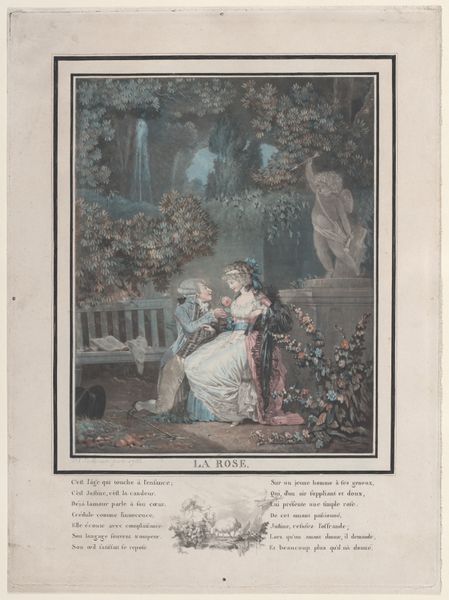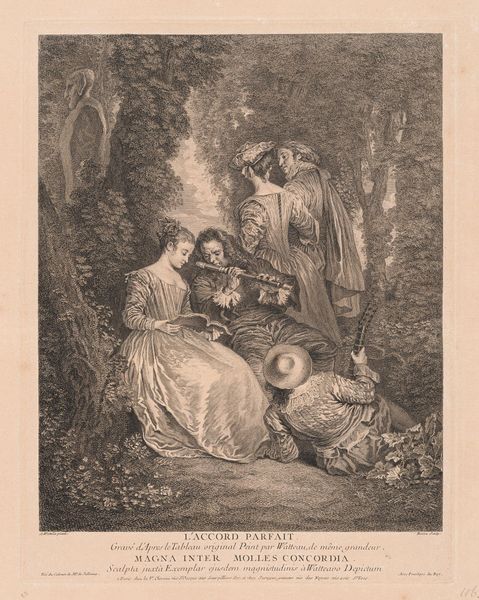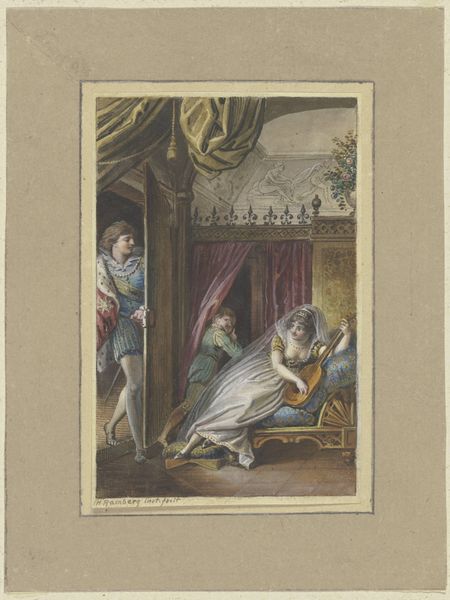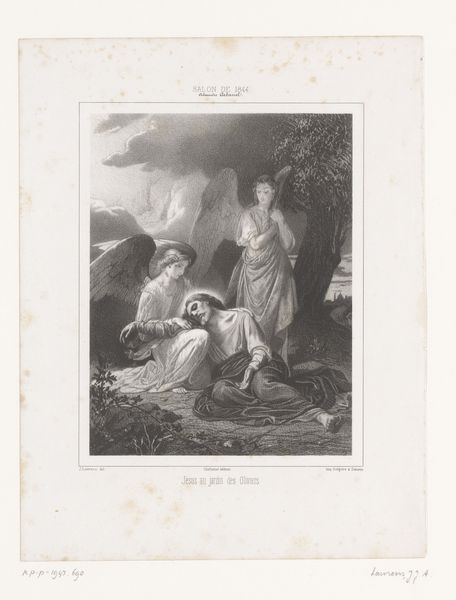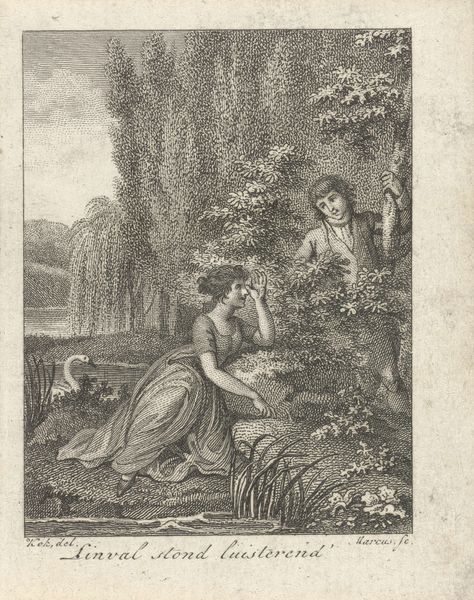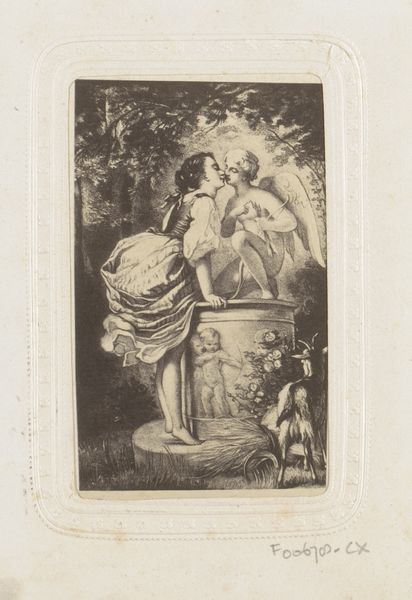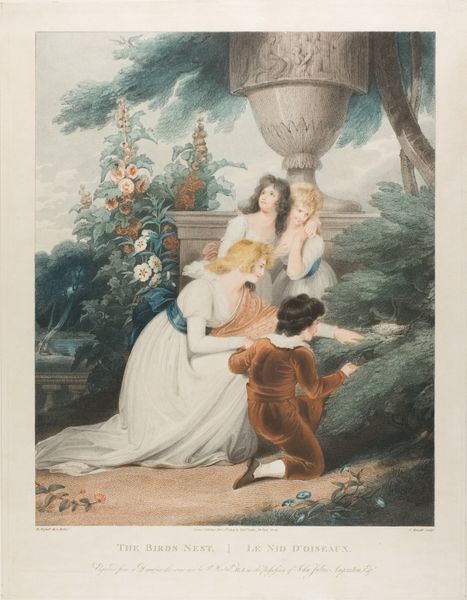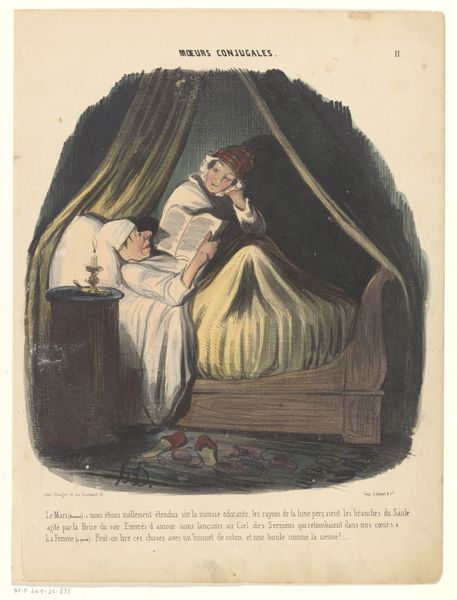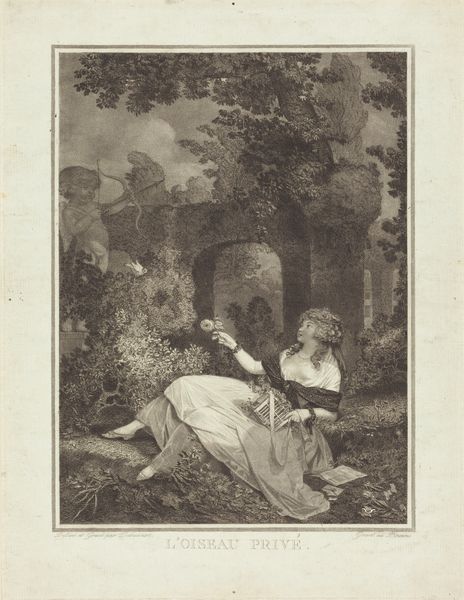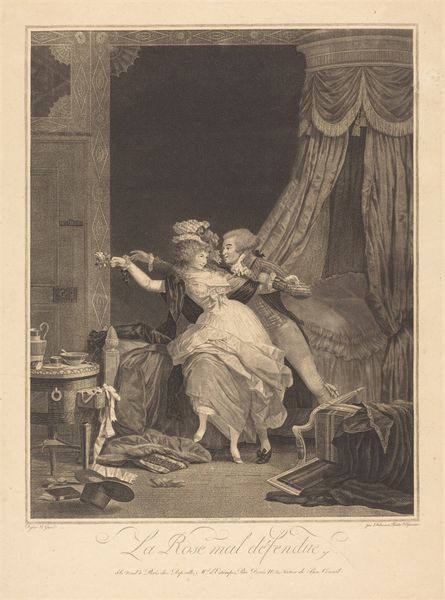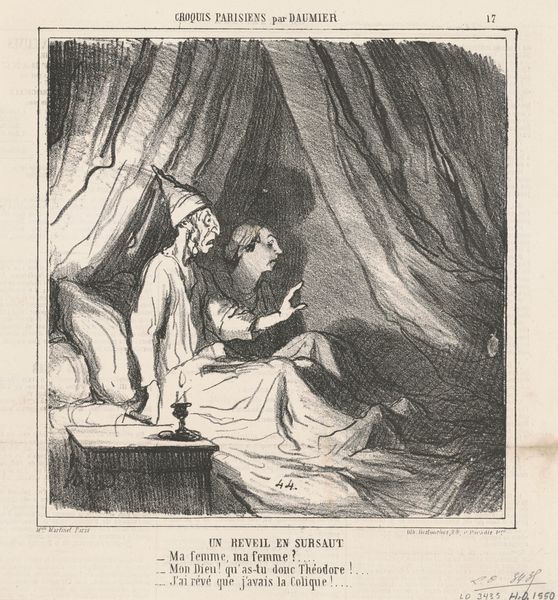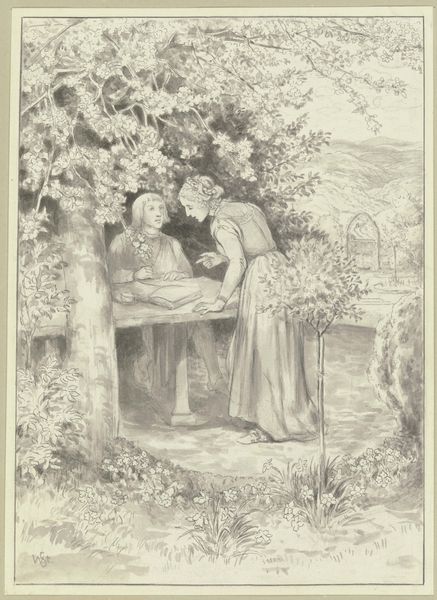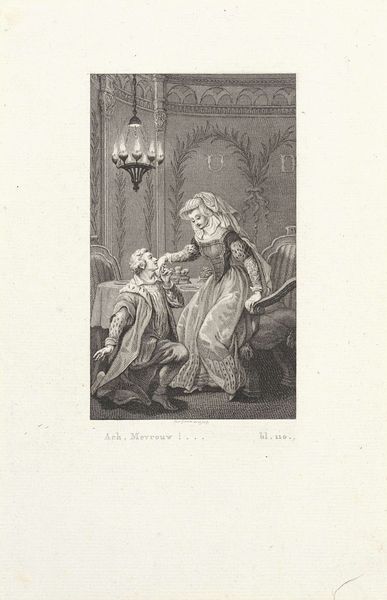
Dimensions: Plate: 13 15/16 × 9 3/4 in. (35.4 × 24.7 cm) Sheet: 14 15/16 × 11 3/16 in. (38 × 28.4 cm)
Copyright: Public Domain
Louis Philibert Debucourt created "The Rose," using etching and aquatint, processes that democratized image-making in the late 18th century. Aquatint, in particular, allowed for nuanced tonal variations, mimicking the effects of watercolor. This printmaking technique involves applying a porous ground to a metal plate, creating a textured surface that holds ink, resulting in soft, atmospheric effects. Here, Debucourt used it to render the delicate gradations of light and shadow in the garden setting, as well as the subtle coloring of the figures’ garments. The rise of print culture coincided with the growth of a consumer society, and works like this catered to a bourgeois audience eager for images of leisure and romance. While seemingly lighthearted, the print reflects the commodification of relationships and the performance of social rituals. Considering the labor-intensive process of creating such a print underscores the intersection of artistic skill, technological innovation, and social context. It challenges traditional distinctions between fine art and craft, highlighting the importance of understanding both materials and making when interpreting the full meaning of an artwork.
Comments
No comments
Be the first to comment and join the conversation on the ultimate creative platform.
